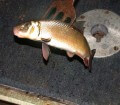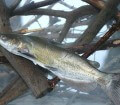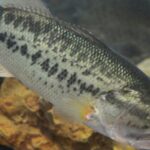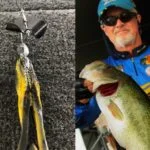John’s Note: When the bass aren’t biting, the bluegills have lockjaw, and the trout are smarter than you are, why not catch some of America’s ugly fish? They don’t win beauty contests, but they’re a lot of fun to catch, and they’re tasty too. 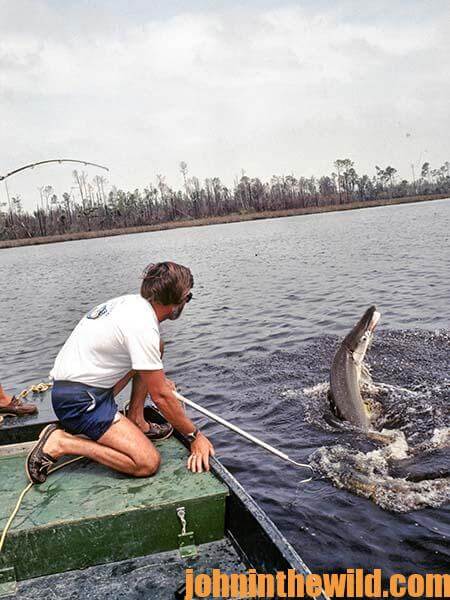
Have you ever seen a picture of a prehistoric creature that wasn’t ugly?
Neanderthal man and his predecessors were downright homely, and how about the dinosaurs and the giant flying lizards? One prehistoric ugly that is still around today is the fierce, toothy alligator gar, a holdover from the Mesozoic Era that looks as though it belongs in a horror house. Found primarily in the southern part of the United States, alligator gar can reach weights in excess of 300 pounds and a length of 10 feet. Forty and 50-pound gar are not hard to find.
Gar are often speared or caught on limb lines, but many sportsmen use a worm rod and a stout conventional reel. To rig for gar, I like to use 20-pound-test line and put on a slip sinker heavy enough to take my bait to the bottom. Next, I tie on a barrel swivel and then attach 18 inches of 50- to 100-pound-test single-strand wire leader. I’ll attach a large treble hook to the end of the leader. Cut mullet is the best bait for the brackish waters along the Gulf Coast. The bait is cast out and allowed to lie on the bottom. Gar will seize their food suddenly but hold it in their hard 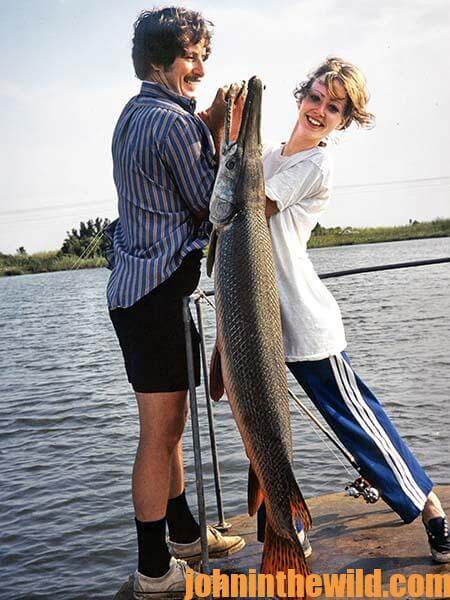 mouths for a while. Then, it is maneuvered into position to be swallowed. In fact, gar feed like alligators and many lizards. The bait must be completely swallowed before you strike, because there is little chance of driving a hook into the fish’s hard, bony mouth. Once you set the hook on a big gar, a fierce war starts. The fish may come out of the water, tail-walk like a tarpon, dive for the bottom and strip off line. Even when a gar has been fought to the boat, it may take off on another run if you touch it.
mouths for a while. Then, it is maneuvered into position to be swallowed. In fact, gar feed like alligators and many lizards. The bait must be completely swallowed before you strike, because there is little chance of driving a hook into the fish’s hard, bony mouth. Once you set the hook on a big gar, a fierce war starts. The fish may come out of the water, tail-walk like a tarpon, dive for the bottom and strip off line. Even when a gar has been fought to the boat, it may take off on another run if you touch it.
Boating the hooked fish is the biggest problem. The worst mistake is to boat a green gar. The fish can wreak havoc with its sharp, pointed teeth and its thrashing head and tail. Fight the gar until it’s on top of the water by the boat and doesn’t flinch when you poke it with an oar or paddle. Even then, tail-roping a big gar and towing it to the dock may be your best tactic. The hide of a gar is best cut with tin snips or wire cutters. Alligator roe is poisonous, so be sure to remove all of it. The rather-coarse, cottony-looking meat can be delicious and is considered a delicacy by many along the Gulf Coast and especially in Louisiana.
Gar Balls:
Ingredients:
3 pounds ga meat
8 medium Irish potatoes, boiled and mashed
2 medium onions, cut in wedges
1 egg
1 cup mixed onion tops and parsley, chopped
2 cups all-purpose flour
Tony’s Creole Seasoning, or salt and pepper
Preparation:
Clean, and skin the gar. With a fork, scrape the meat off the cartilage. Put onions and meat into a meat grinder. Mix with boiled, mashed potatoes, onion tops, parsley and beaten egg. Season mixture to taste. Roll into 2-inch balls, dip in flour, and fry in hot oil at 375 degrees, until balls are brown and float. Drain on paper towels or brown paper. Tony’s Creole Seasoning is available in many food stores.
To get “The Best Wild Game & Seafood Cookbook Ever: 350 Southern Recipes for Deer, Turkey, Fish, Seafood, Small Game and Birds,” click here.
About the Author
John Phillips, winner of the 2012 Homer Circle Fishing Award for outstanding fishing writer by the American Sportfishing Association (AMA) and the Professional Outdoor Media Association (POMA), the 2008 Crossbow Communicator of the year and the 2007 Legendary Communicator chosen for induction into the National Fresh Water Hall of Fame, is a freelance writer (over 6,000 magazine articles for about 100 magazines and several thousand newspaper columns published), magazine editor, photographer for print media as well as industry catalogues (over 25,000 photos published), lecturer, outdoor consultant, marketing consultant, book author and daily internet content provider with an overview of the outdoors. Click here for more information and a list of all the books available from John E. Phillips.

